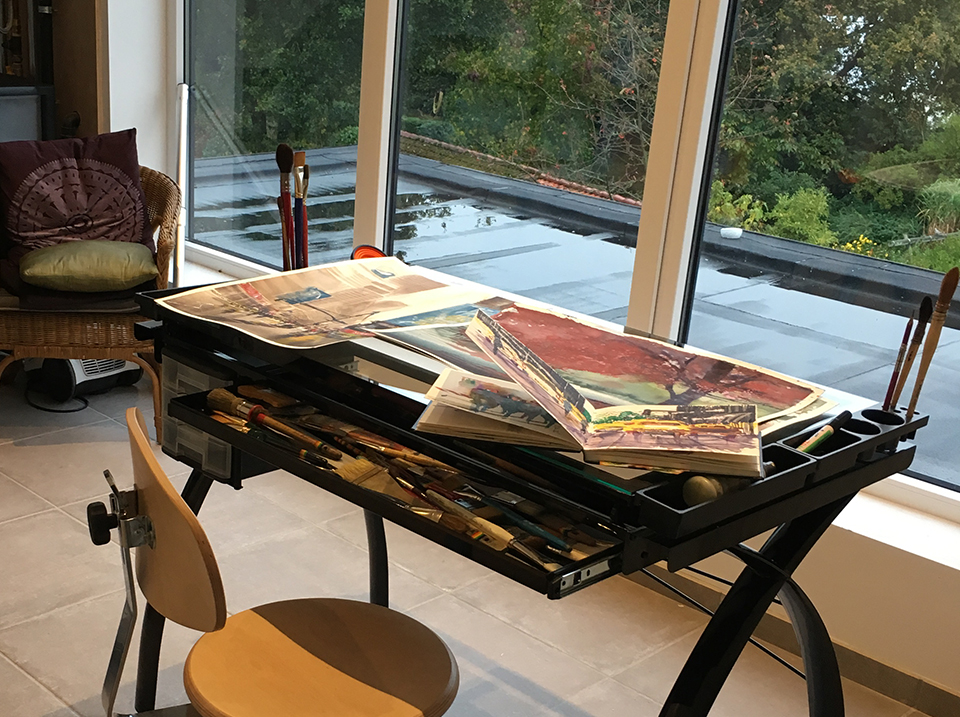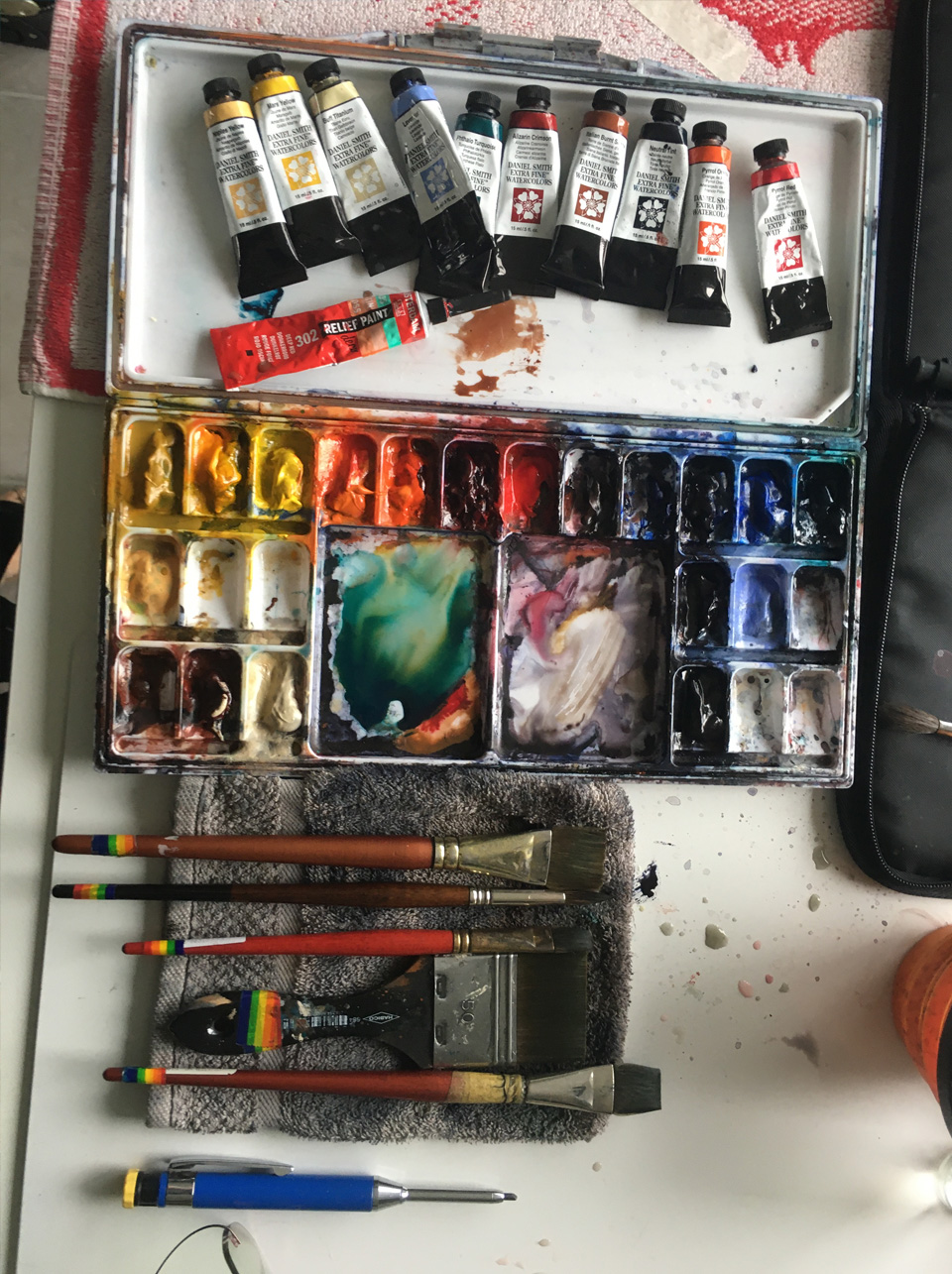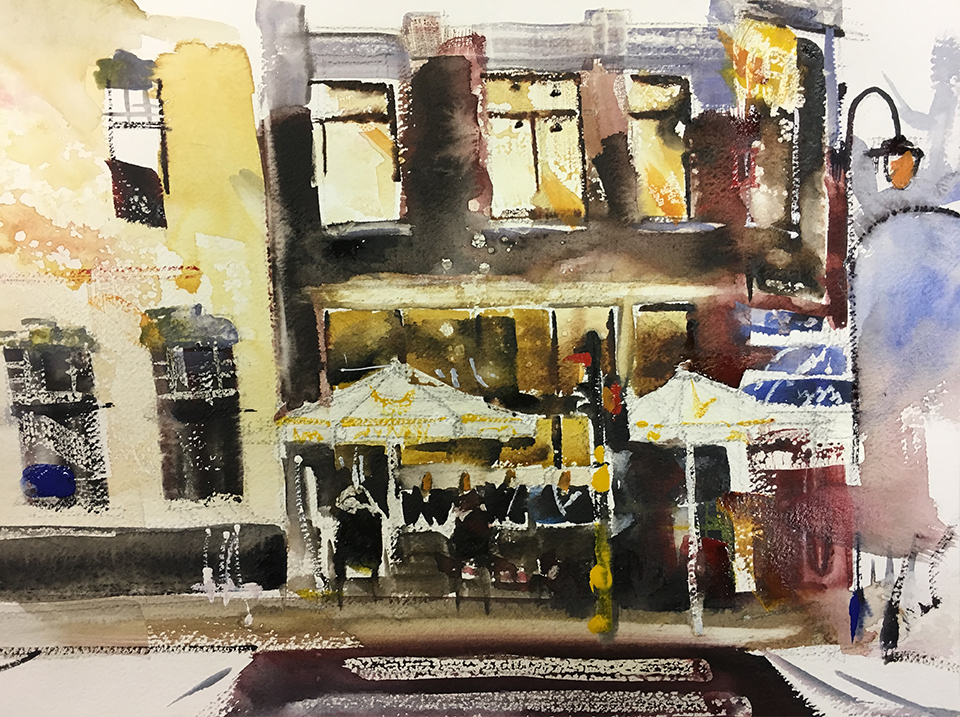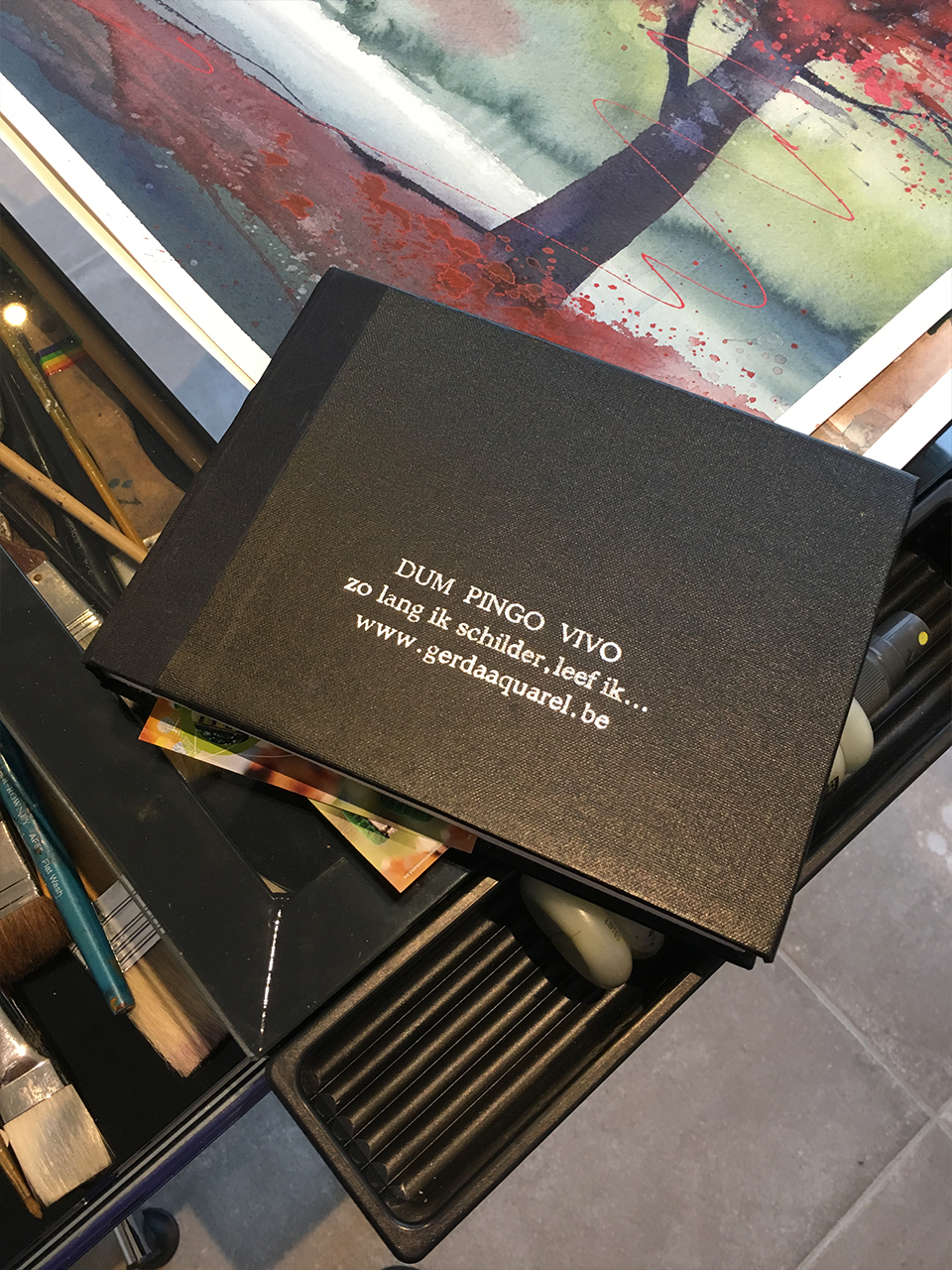Watercolour
Eventually, and partly due to my training, I opted for aquarelle painting. A subject in itself. Throughout my quest I discovered that aquarelle painting is the cradle of the art of painting. But before you start painting, there are a few other things to take into account...
Sketchbooks
The bible for every artist, it is a source of information. I have my sketchbook with me on every holiday; I study what I like, sit down and take the time to examine the shape and colour. Once I get home, this information is useful to get me started in my studio, during the aquarelle classes and aquarelle workshops.
Composition
How to get started on a white sheet, positive and negative shapes, defining formats, setting focus, which colours and shapes to use where? Of course, as a painter, before anything else, you must be able to assess tones. That is the whole story of light/middle shade/dark.
Drawing
I often get asked the question if one must know how to draw in order to paint aquarelles… to which I reply with the question: just what does that mean, “knowing how to draw”?
Analytical drawing
This is an examination process which includes perspective, among other things. For this, you can follow a few rules: the laws of perspective. If you “train” for this, you will certainly master it after some time. You must take the time to learn, to repeat, to look, and you must measure and assess proportions, over and over …
Intuitive drawing
Is what you see and not what you think you see, eye-hand coordination. An example: you know that there can be a lot of things on a table, but you see this differently as a painter, so if you believe what you see, the drawing will look quite different.
The question remains: “Must I know how to draw?”, to which I continue to reply with the question: just what does that mean, "knowing how to draw"? Everyone masters the latter drawing method, I'm sure...
I still believe that training is very important, and by this I mean practising this trade on a daily basis, if only in your surroundings, seeing in an examining manner, and not looking. I find it important to look at the masters who showed us how to do it; I have a great admiration for the works of RUBENS, RIK WOUTERS, KATE KOLWITZ, RODIN, TURNER.
As a painter, you develop a handwriting of your own, your lines show how you handle your tools. No two persons have the same handwriting; neither do two painters or artists. It is unique, and quite a relief.
PALETTE : DANIEL SMITH
I am the ambassador for Belgium
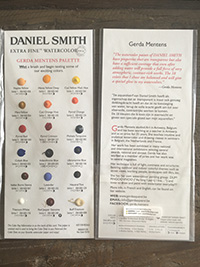
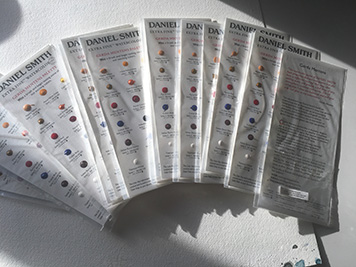 THE PAPER :
THE PAPER : Old Holland Classic 535gr
